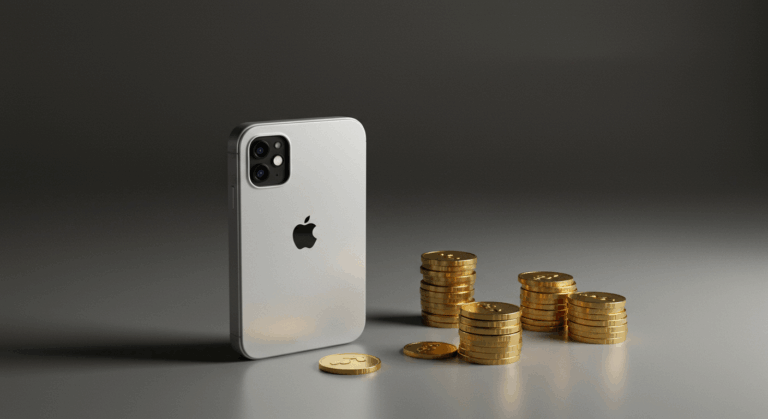To avoid unnecessary expenses and bolster your savings, you must first master the art of conscious spending. In today’s economic climate, cultivating a mindset of frugal economy is not about deprivation, but about empowerment. It is the strategic allocation of your hard-earned money towards what truly matters, freeing you from the cycle of living paycheck to paycheck and paving the way for financial security. This article will provide you with a clear roadmap to identify and eliminate spending leaks, allowing you to take control of your finances and build a stronger financial future.
By understanding your spending habits and implementing practical strategies, you can redirect funds from non-essential outlays to your savings and investment goals. The journey to financial wellness begins with small, deliberate steps, and cutting down on superfluous costs is one of the most impactful first actions you can take.
The Psychology of Spending: Understanding Your Triggers
Before you can effectively cut costs, you must understand why you spend. Much of our spending is not driven by need, but by psychological triggers. These can include emotional spending—shopping to feel better during times of stress or boredom—and impulse buying, which is often spurred by clever marketing, limited-time offers, or the simple desire for instant gratification. Recognizing these patterns is the first step toward breaking them.
Take a moment to analyze your recent non-essential purchases. What was your emotional state? Were you influenced by an advertisement or social media? By becoming a conscious consumer, you create a crucial pause between the urge to buy and the action of purchasing. This moment of reflection allows you to assess whether the expense aligns with your long-term financial goals or if it’s merely a fleeting want. This self-awareness is fundamental to building a robust personal finance strategy.
The Foundational Step: Creating a Realistic Budget
A budget is your primary tool for managing cash flow and identifying where your money is going. Without it, you are navigating your financial life blindfolded. The goal is not to restrict yourself, but to create a plan that reflects your priorities. A well-crafted budget illuminates areas of overspending and reveals opportunities to save.
To start, follow these simple steps:
- Track Your Income: List all sources of after-tax income you receive each month.
- List Your Fixed Expenses: These are the consistent, predictable costs like rent or mortgage, loan payments, and insurance premiums.
- Identify Your Variable Expenses: These costs fluctuate, such as groceries, fuel, utilities, and entertainment. This is the category where most unnecessary expenses hide.
- Analyze and Adjust: Subtract your total expenses from your total income. If the result is negative or too small, it’s time to scrutinize your variable spending. Identify what can be reduced or eliminated entirely.
Many find the 50/30/20 rule a helpful guideline: 50% of your income for needs, 30% for wants, and 20% for savings and debt repayment. While not a rigid law, it provides a solid framework for allocating your funds and ensuring you are consistently building your financial safety net.

Practical Strategies to Cut Everyday Unnecessary Expenses
Once your budget is in place, you can begin the practical work of trimming the fat. This is where a commitment to a frugal economy translates into tangible results. Focus on making small, sustainable changes across different areas of your life. These incremental adjustments add up to significant savings over time.
Here are some highly effective tactics you can implement immediately:
- Master Your Food Bill: Plan your meals for the week, create a detailed grocery list, and stick to it. Avoid shopping when you are hungry, as this often leads to impulse buys. Reducing how often you eat out or order takeout can free up a substantial amount of money.
- Audit Your Subscriptions: Carefully review your bank and credit card statements for recurring charges. Cancel any subscriptions or memberships you no longer use or that provide little value, from streaming services and mobile apps to gym memberships.
- Reduce Utility Consumption: Adopt energy-saving habits. Switch to LED light bulbs, unplug electronics when not in use, and be mindful of your water and heat usage. These small actions lower your monthly bills and are environmentally responsible.
- Implement a Purchase Pause: For any non-essential purchase over a certain amount (e.g., $50), enforce a 30-day waiting period. After a month, you can objectively decide if you still need or want the item. Often, the desire will have passed, saving you from an unnecessary expense.
- Re-evaluate Brand Loyalty: In many cases, generic or store-brand products offer comparable quality to their name-brand counterparts at a fraction of the cost. Test alternatives for groceries, medications, and household supplies.
The Mindset of a Frugal Economy: It’s Not About Deprivation
It’s crucial to distinguish between being frugal and being cheap. Being cheap is about spending as little as possible, often at the expense of quality or ethics. Frugality, on the other hand, is about value optimization. It is the conscious decision to spend money on things that provide genuine, lasting value while ruthlessly cutting back on what doesn’t. It is not about deprivation; it’s about prioritization.
Adopting this mindset transforms the act of saving from a chore into a strategic choice for a better future. Every dollar you don’t spend on a fleeting want is a dollar you can allocate toward your goals, whether that’s building an emergency fund, saving for a down payment on a house, or investing for retirement. This disciplined approach to spending is a cornerstone of building wealth and achieving true financial independence. It is a powerful way to boost your savings potential and take control of your destiny.
Conclusions: Building a Sustainable Financial Future
Learning to avoid unnecessary expenses is a skill that pays lifelong dividends. It is the bedrock of a healthy financial life, enabling you to build a buffer against emergencies, reduce debt, and actively work toward your most important goals. The process begins with understanding your own spending psychology, proceeds with the creation of a realistic budget, and is put into action through daily, practical strategies.
Embracing a frugal economy is not a sacrifice but a powerful act of self-investment. By consciously directing your resources away from wasteful spending, you are building a more secure, stable, and prosperous future for yourself. Take these principles and apply them with consistency; your future self will thank you.
Frequently Asked Questions (FAQ)
How do I identify an ‘unnecessary’ expense?
An unnecessary expense is typically anything that does not align with your core needs or long-term values. A good test is to ask yourself: Does this purchase help me achieve my financial goals? Will I remember or value this purchase in a month? If the answer is no, it’s likely an unnecessary expense. Things like impulse buys, unused subscriptions, and convenience purchases that could be avoided with planning usually fall into this category.
Is being frugal the same as being cheap?
No, they are different concepts. Being cheap focuses solely on the lowest price, often sacrificing quality and long-term value. Frugality is about being resourceful and prioritizing spending. A frugal person might spend more on a high-quality item that will last for years, thereby saving money over time by avoiding frequent replacements. It’s about maximizing value, not just minimizing cost.
How quickly can I see results from cutting expenses?
You can see results almost immediately. By canceling a subscription or deciding against a daily coffee purchase, you save money that very day. Within the first month of tracking your spending and making conscious cuts, you should be able to see a noticeable increase in the amount of money you have left over. The cumulative effect becomes significant over several months and years, accelerating your ability to save and invest.





